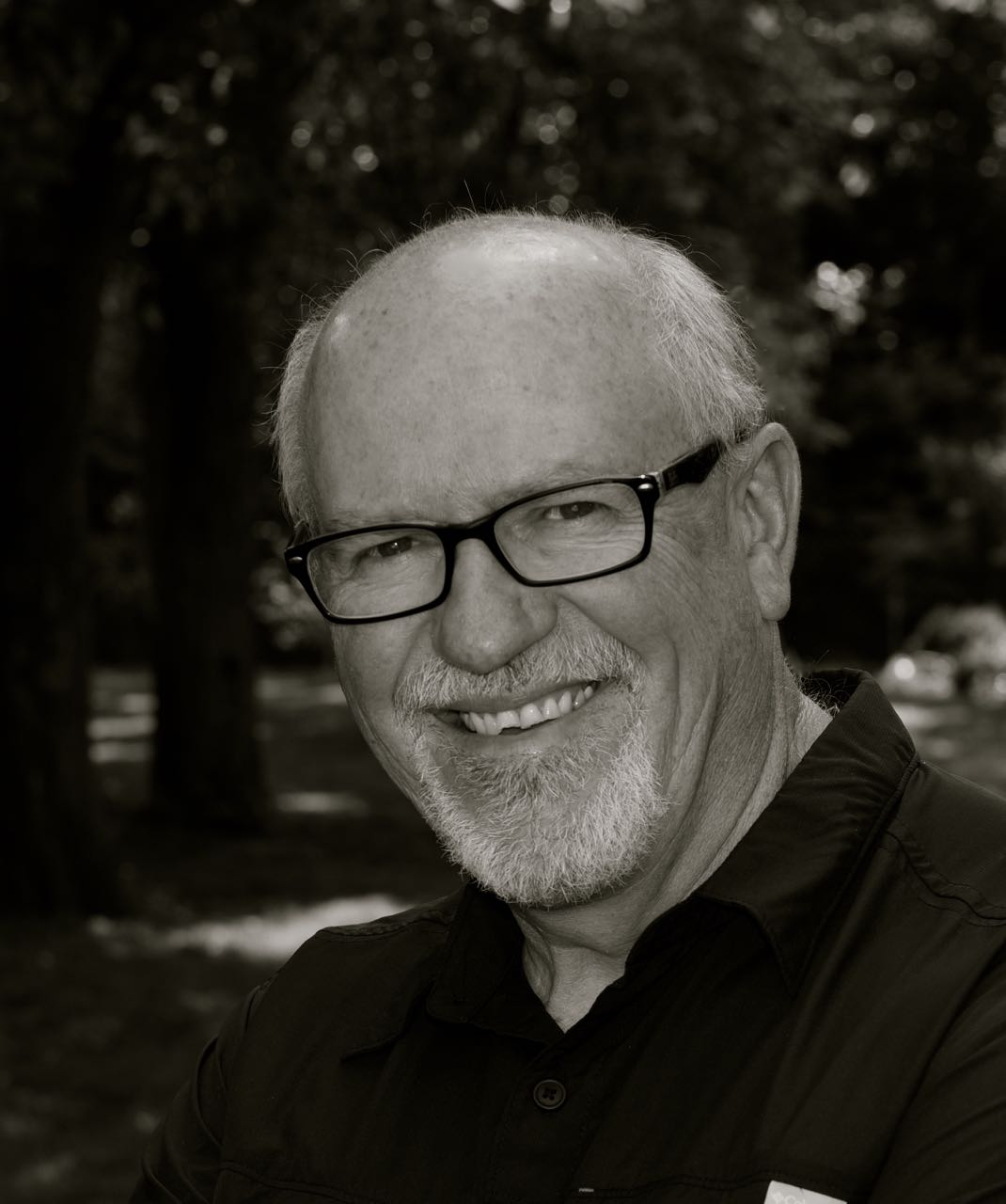I understood the power of art for the first time when I sat in Bob Regier’s Into to Art class my freshman year in college. He turned off the camera and whirr-click-whirr-click-whirr-click of the slide projector threw stunning images up on the screen.I never considered myself an artist but I fell in love with art, so I took as many courses in art at Bethel that I could with Gail Lutsch, Merrill Krehbiel, Reinheld Janzen and others. First, it was a camera that was my medium for art since I struggled to draw or paint, but then one day my son, Isaac McNary, brought a wood lathe over to my shop and suggested I try it. I told him, NO!, I had tried it once years ago before YouTube videos and managed to break a window in my shop when the wood grabbed a tool and threw it. Isaac said, “Aw, come on Dad, try it just once.” I became as addicted to woodturning as fast as some folks get addicted to drugs.

I bought a small lathe and began to turn and I got into a “flow”. Mihally Cziksentmihalyi described the “flow” as that intersection between skills and challenges. If the challenges are more than our skills, we get frustrated. If our skills are more than our challenges, then we get bored. The sweet spot, that space in which we can lose track of time, when skills and challenges align is that “flow.” Then, one day, a farmer near Moundridge, Bruce Regier – who is an EXCELLENT photographer – messaged me with photo of tree he had laying in his barn – a Siberian Elm chocked full of burls (wart-like protrusions that are filled with the most exquisite wood patterns). I picked it up and wondered what in the heck I was going to do with it. My tiny lathe and my skill set was no match for this gorgeous treasure. As I leaned on the rail of the trailer, I was reminded of what I tell high school and college students when I talk to them about engaging in the fight against global hunger. In fact, a phrase from my speech is, “No matter if you are an artist or architect, there is some way you can use your skills in the fight against hunger.”

Thus began my journey of “Doing Good With Wood.” I have a lot of people ask to buy my wood projects and I’m just not in to selling my stuff. However, I have raised a LOT of money to feed the hungry through my turning projects and other wood projects. I’m a pretty busy guy so I can’t fulfill all requests, but, I love creating things and having people donate to helping feed the hungry. I’m now prepping some new pieces for the upcoming show and will exhibit some I’ve already raised money from. It was 20 years ago that a starving little girl in Nicaragua threw her arms around my neck and asked me to feed her. I made a vow right then to God I would do whatever I could for the rest of my life to feed hungry people. Little did I know that that journey would include developing artistic skills with my favorite subject – wood – to help feed the hungry.

Along that journey, I have learned the two distinct parts of hunger: relief and development. Relief is “giving a person a fish.” Development is “teaching a person to fish.” Both are necessary at different times, but the most important is helping people feed themselves because that is the most important element to help restore human dignity. Although I’ve been engaged in a lot of “relief” efforts, the funds raised from this will go to a “development” program – a brand new one I’m working on with The Outreach Program which is targeted towards helping smallholder farmers in Africa (a smallholder owns 5-10 acres).

This project, GrowPoint International, is focused on building out local and regional food systems in a 3-step process.
- Assessing the three food system components of production, processing and distribution.
- Engaging the community in a dialogue to examine the findings then identify the needs to augment any of those three parts and build a business plan.
- Identify various funding streams to provide assistance through social impact investors, micro-finance, corporate social responsibility, foundations, and private donors.

One of the areas of the GrowPoint project is one of my favorite places in the world, Nkungi Village in Tanzania, East Africa. The Outreach Program founders, Floyd Hammer and Kathy Hamilton, began Outreach in 2004 after helping a physician friend convert a leprosy clinic into an AIDS hospice. While there, they say children dying of hunger related issues and began trading maize (corn) for hand-woven grass baskets made by the women in the village. You can read Floyd and Kathy’s Story and even order the baskets at www.outreachprogram.org.
Stay tuned! I also have a Doing Good With Wood page on Facebook that you can see some of the other things I have done. Also, I’ll post the offerings along the way with a suggested “donation” so, if you want them, you can donate to GrowPoint Int’l, which is under the IRS 501c3 umbrella of The Outreach Program as a public charity!




